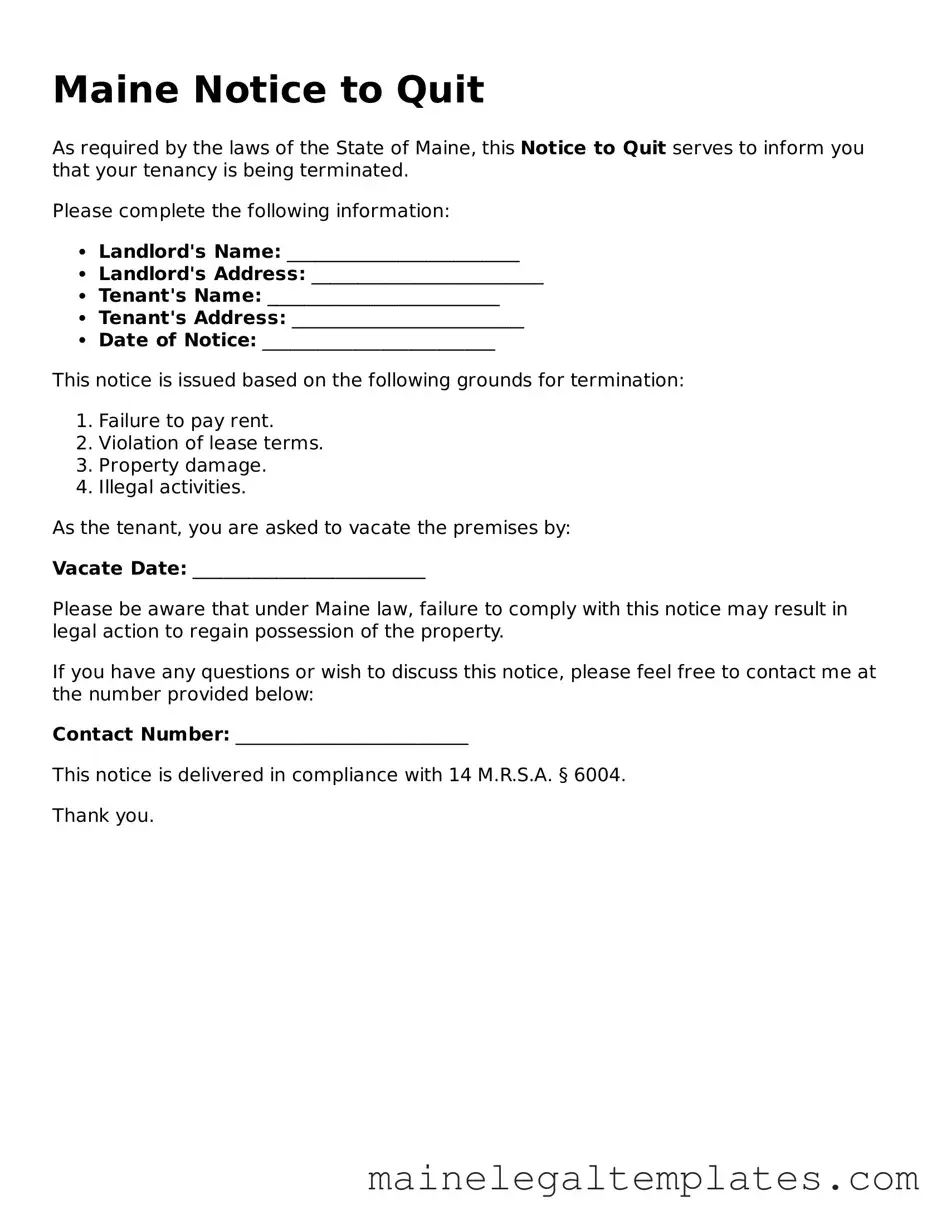Legal Notice to Quit Template for Maine
The Maine Notice to Quit form serves as a formal document that a landlord uses to notify a tenant of their need to vacate the rental property. This notice outlines the reasons for termination of the lease and provides the tenant with a specified timeframe to leave. Understanding this form is crucial for both landlords and tenants to ensure compliance with state laws and protect their rights.
To fill out the Maine Notice to Quit form, click the button below.
Open Document Online
